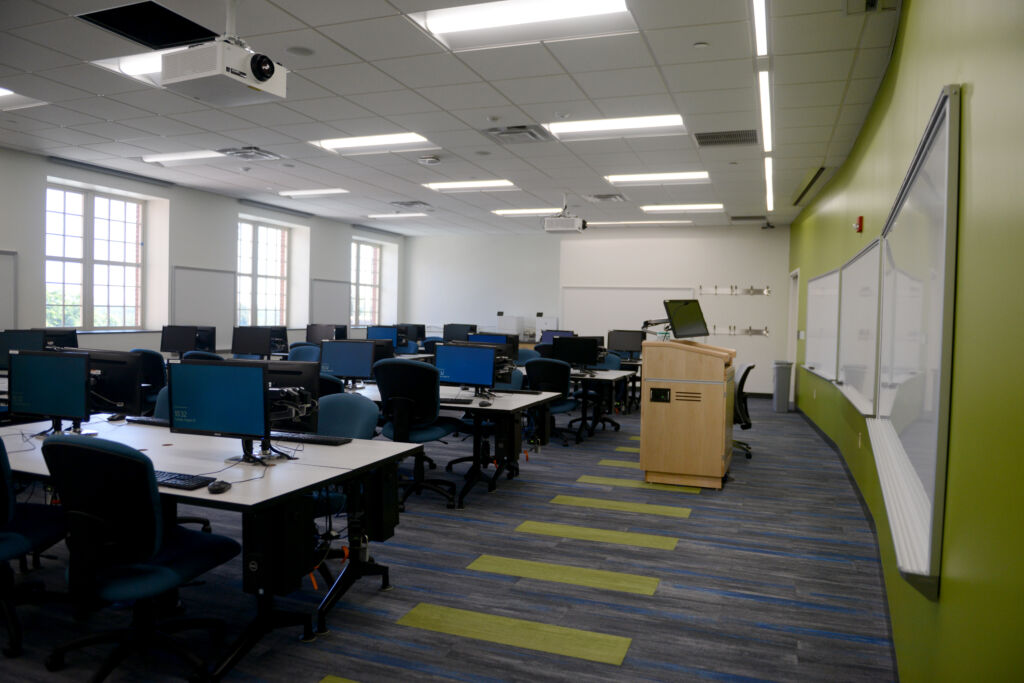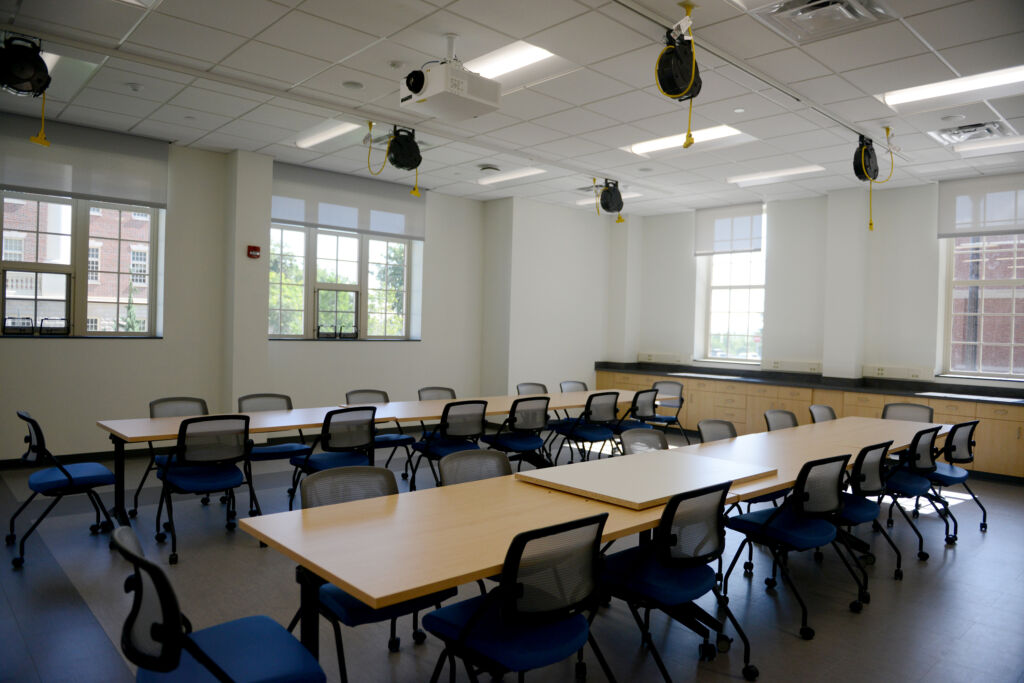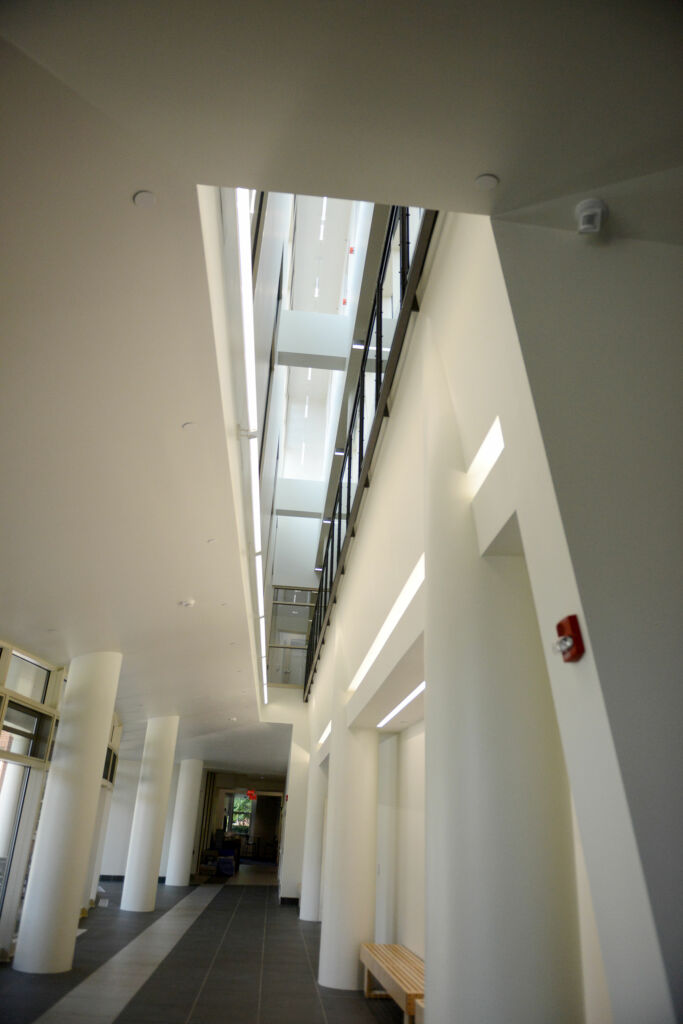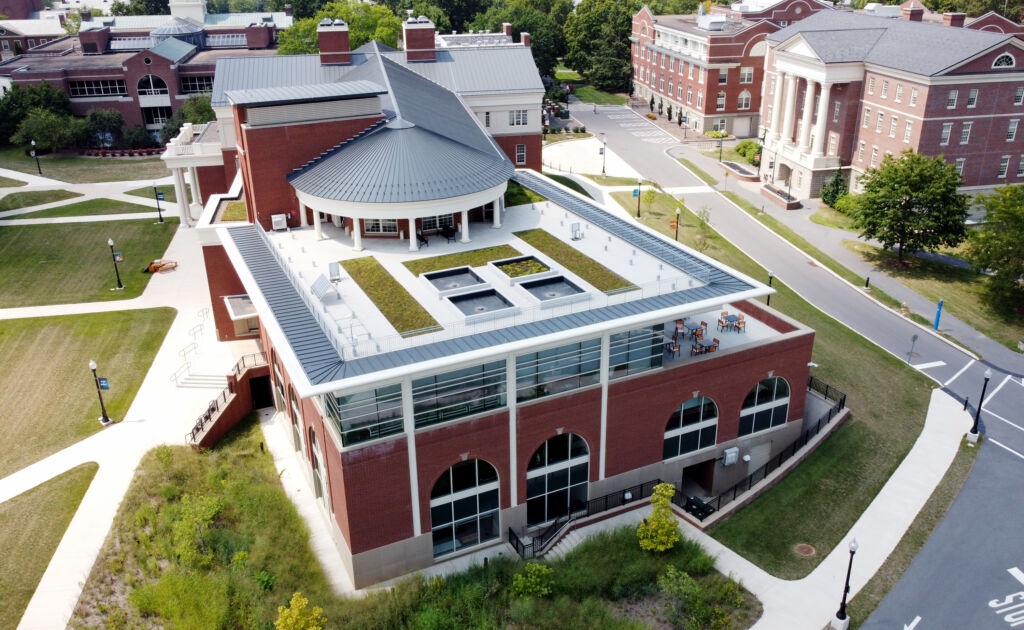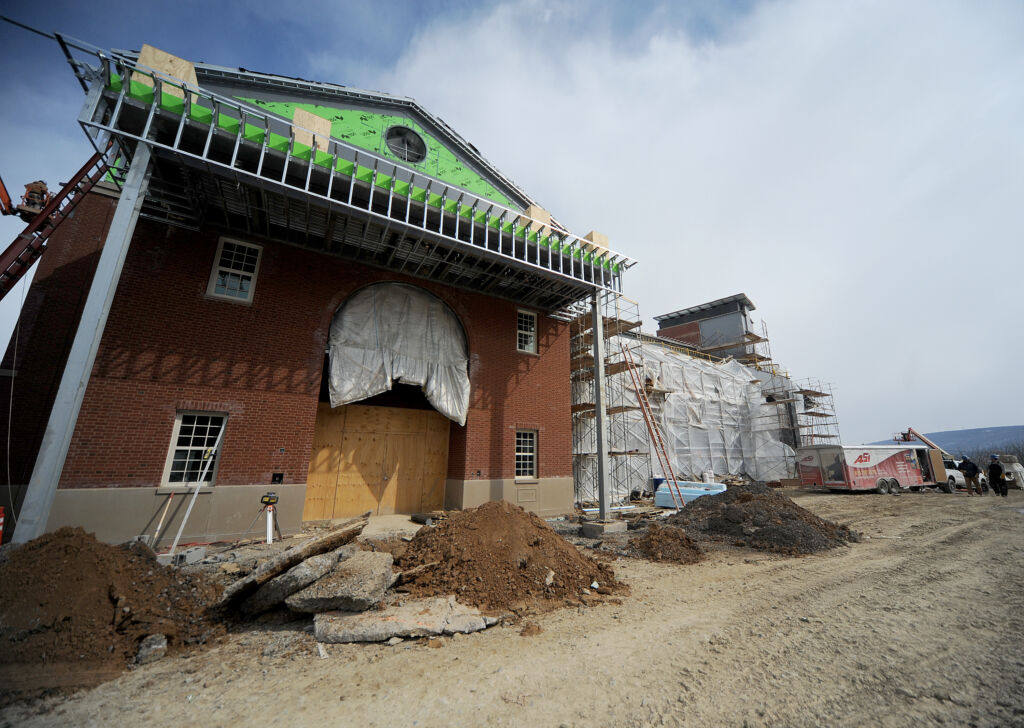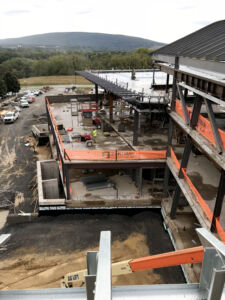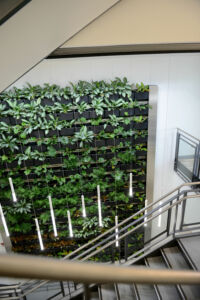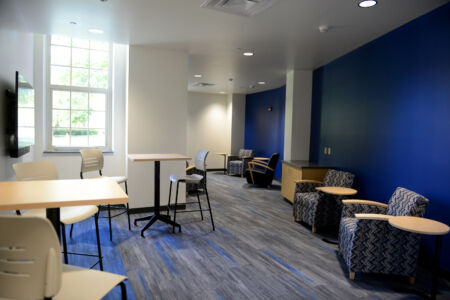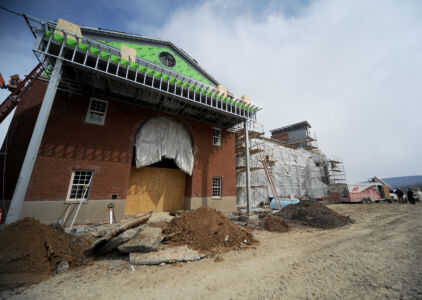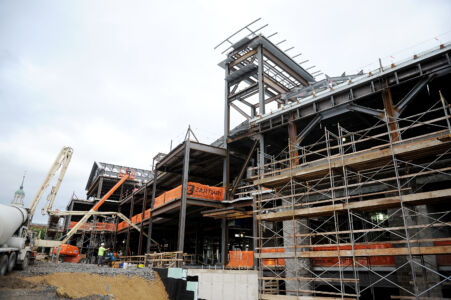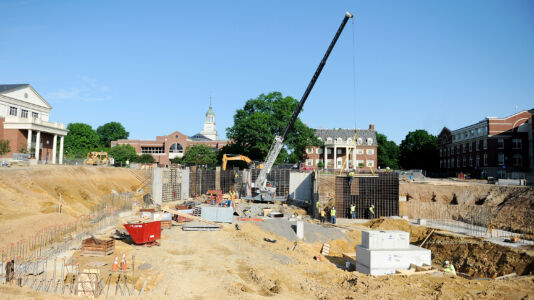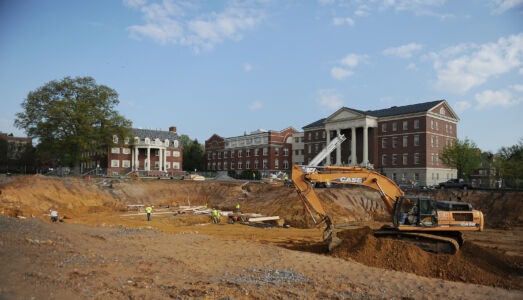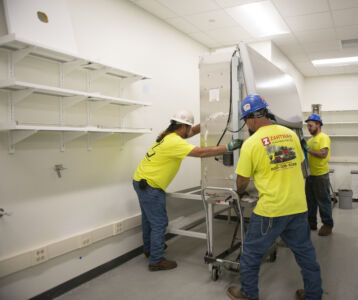Academic East At Buckenll University
As a local contractor, Zartman Construction is privileged to provide construction services to one of the country’s premier academic institutions: Bucknell University.
Among our most noteworthy achievements is the completion of Academic East; a new interdisciplinary home to Bucknell’s Engineering and Education departments.
Academic East is an academic building including lecture halls, classrooms, offices, and 25 cutting edge science and engineering laboratories. Most notably, the building features several passive and active sustainable design features that emphasize the importance of sustainability in today’s world. Some of these features include a 3-story solar chimney that utilizes advanced BAS programming, operable curtain wall, jalousie windows, natural convection to reduce cooling and heating loads, a Sustainable Design Center that provides easy monitoring of current and past energy consumption, and a two story Live Wall containing plants that help filter the building’s air naturally.
Zartman Construction was the general contractor for this 78,000 square-foot architectural showcase. The $30 million project is the largest construction endeavor undertaken by the University to date.
Academic East completes a new quadrangle on campus, along with Academic West built by Zartman Construction in 2013. The building matches the rest of the campus aesthetically, utilizing the signature Bucknell brick and stonework made by a local company.
Design features include many complex geometries, multiple curving walls with intersecting curved ceilings built from drywall, stucco, masonry, and metal, which were both a challenge and a delight to construct. There are many sustainability features integrated into the building plus an abundance of natural light. Every inch of the building was designed with a purpose, whether for education or research.
Creating new educational spaces
Academic East expanded the College of Engineering laboratory space by almost double, with the creation of 25 new labs.
These labs house cutting-edge research equipment found only in the nation’s top universities, including a scanning electron microscope, nanoindetenter and an electric, drive-by wire car. With the electron microscope and nanoindenter students will
be able to study organisms at near-atomic resolution. Autonomous vehicle technology can be studied in the lab complete with electric hoist, allowing students to climb underneath and inside the car. Another lab is large enough for a runner to break into a sprint, allowing more biomedical engineering students research opportunities. Other labs allow for the study and testing of medical equipment, energy usage, water quality, pharmaceuticals, air quality and food.
This interdisciplinary and collaborative learning space houses classrooms, research space and offices for the College of Education. The multi-purpose classrooms are spacious and functional. Desks and chairs are easily lifted or rolled into new configurations. Rooms also feature wireless projectors, Internet access and numerous electrical outlets. One of these classrooms is used for a science education class and includes wet lab benches and movable, suspended electrical outlets. Research spaces include interview rooms and computing resources.
Meeting and hearth spaces in various areas of the building can be utilized by students of any discipline at Bucknell. These inviting spaces offer arm chairs, small tables and white boards, plus two patio areas – one on the ground floor and another on the second floor. Benches on the green roof are the perfect spot to catch a fantastic view of Bucknell and the Susquehanna Valley.
Another of these intentional spaces is the balcony study area which overlooks the living wall and is filled with natural light. These spaces were designed to nurture productivity inside a peaceful environment
Sustainable building initiatives
Academic East is LEED Gold certified. The building was designed with environmental and energy sustainability in mind.
One of the inventive sustainability features of the building is the three story “solar chimney” which allows air to flow from the first floor and out the third floor. As the hot air rises through the solar chimney the building naturally draws in cooler air from other areas, including the jalousie windows on the main floor. This feature at the building’s center allows for natural ventilation.
The jalousie windows on the main floor of the building are automatically operated to promote natural ventilation throughout. These windows were manufactured in Germany, which made the acquisition process difficult. Many of the windows and doors throughout the building will close or open automatically depending on the humidity, temperature and outside weather.
Window coatings, both low emissivity coatings and ceramic frittings, also contribute to low energy usage. The low emissivity coatings reduce the amount of heat transfer into the building from the external temperatures while still allowing for visibility. Ceramic fritting was added to some of the windows to further reduce solar heat gain.
The canopy on the southern exposure provides shade from the midday summer sun while also letting in lower-angle light during the winter. There is also a green roof which can be studied by students, learning about natural water filtration, storm water control methods and next-generation solar systems. It also helps to reduce the load of storm water on the Susquehanna River, visible from the roof. Supports for solar instruments were built-in to the roof with real-time monitors in a nearby classroom for research purposes.
A living wall is featured in the main lobby, improving acoustics and air quality. This 25-foot wall has the plumbing installed behind the rows of individual plants.
A “Sustainability Command Center” measures the real-time environmental footprint of the building which allows the University to track current sustainability initiatives as well as create new ones for future construction projects.
Over 75 percent of the construction waste was diverted from landfills and recyclable resources were placed back in the manufacturing process. Wood, asphalt, concrete, brick, metals, cardboard, paper and drywall were all separated out during the process to be diverted or recycled.
Regional materials were utilized whenever possible, including steel, concrete, brick and drywall. More than 30 percent of materials were sourced regionally. And over 30 percent of the buildings materials, including steel, concrete, and drywall, was sourced from recycled content. Over 50 percent of the construction wood products were FSC®-certified.
Bucknell University encourages sustainable design concepts and LEED requirements in all projects on their campus. Zartman Construction is a capable and enthusiastic partner in their pursuit of a greener construction process and sustainable design.
Challenges overcome during construction
The list of project challenges spanned steel market volatility, record breaking rain fall, constrained and challenging working spaces, obscure internationally specified finishes and select materials, and complex building geometries.
Fortunately, the talented Zartman team faced these challenges head-on to create solutions within project mandates. The complex project was completed in 15 months against a hard deadline and the start of the fall 2019 school semester.
During the fifteen month construction process, our tireless regimen of safety enforcement yielded one loss time accident across all of the trades, with over 186,000 hours worked.
Academic East is an impressive contribution to the evolution of sustainable construction. Zartman established a new benchmark for sustainable expertise with which we will measure future design projects.
Academic East at Bucknell University is a magnificent addition to the picturesque, yet cutting-edge, academic experience recently named one of the top two “most beautiful” campuses in the country.


